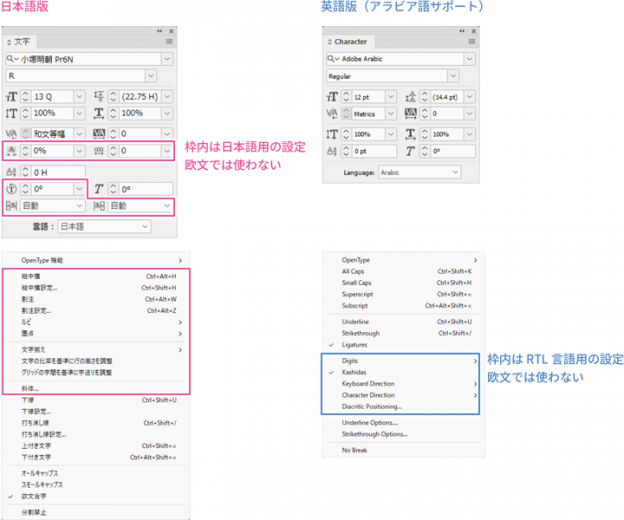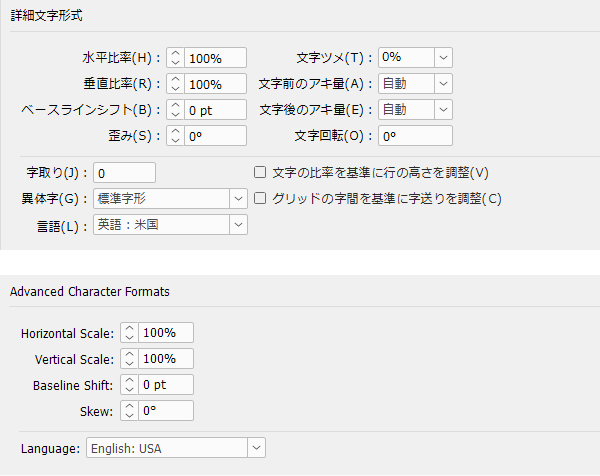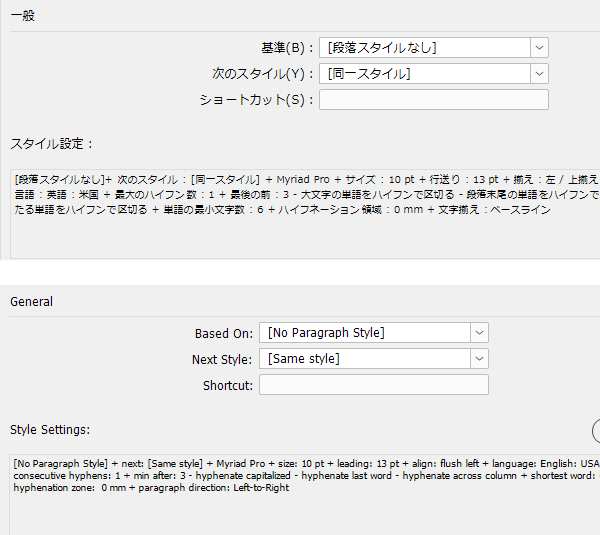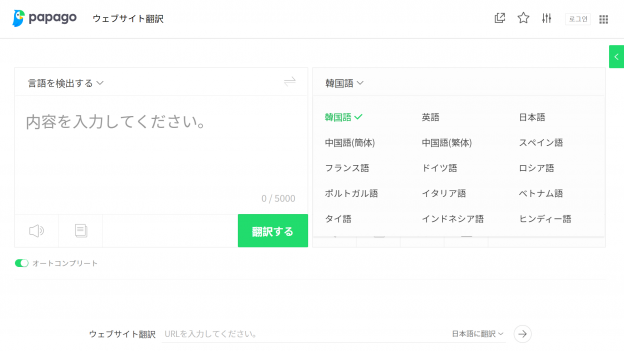Until now, the "Multilingual Typesetting Notes" have discussed the customs, practices, and conventions for readable typesetting, but have hardly touched on how to achieve this in DTP. There are two reasons for this.
One reason is that the primary intended readers of this article are not typesetters but editors, that is, those who create manuscripts and give instructions. Since typesetters are supposed to follow the manuscript instructions, maintaining typesetting quality requires not only typesetters but also editors to have knowledge of typesetting.
The other reason is that while some creators are enthusiastic about improving and automating DTP efficiency, they tend to neglect typesetting quality, and I want them to pay at least a little attention to typesetting. Technological innovation is wonderful, but it must not come at the expense of readability.
That said, just as the quality of English text affects the quality of multilingual translations, the way English DTP data is created also impacts the quality and efficiency of multilingual typesetting. Therefore, I would like to consider how to create well-organized English DTP data using InDesign as an example.
Table of Contents
Prepare environments for Japanese and multilingual use
Prepare environments for Japanese and multilingual use
The best working environment for setting English text is the English version of InDesign. The panels necessary for Western typography are displayed without excess or deficiency, and various default values are optimized for Western text. Conversely, unnecessary features (such as vertical typesetting, Japanese composer, and character alignment other than baseline) are not displayed.
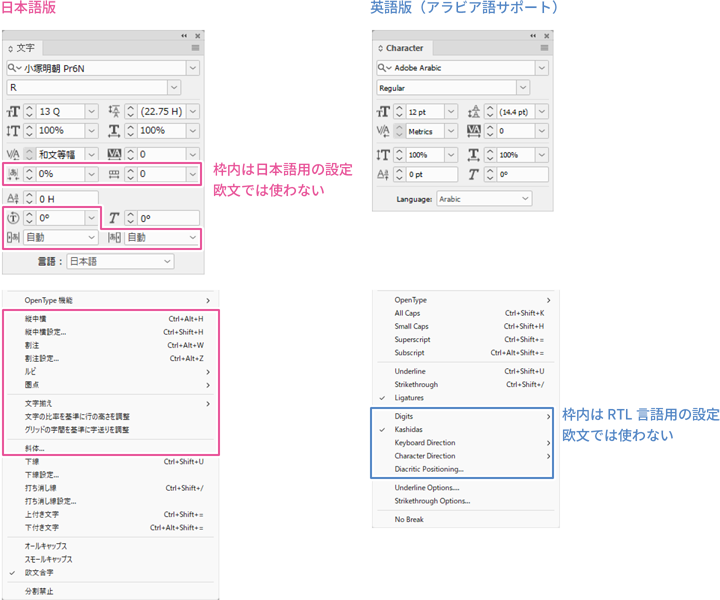
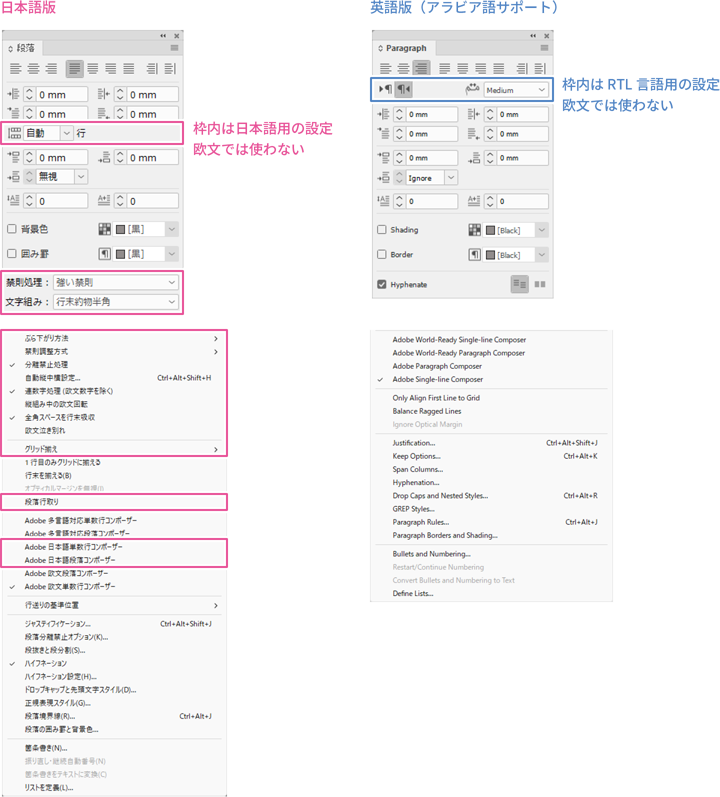
However, having only the English version is inconvenient and restrictive when working with non-Latin scripts. If you regularly handle Latin and multiple languages, it is best to prepare two environments: a Japanese version and an English version (with Arabic support). By switching environments according to the task, you can support a wide range of languages, including RTL languages (Right-to-Left languages).
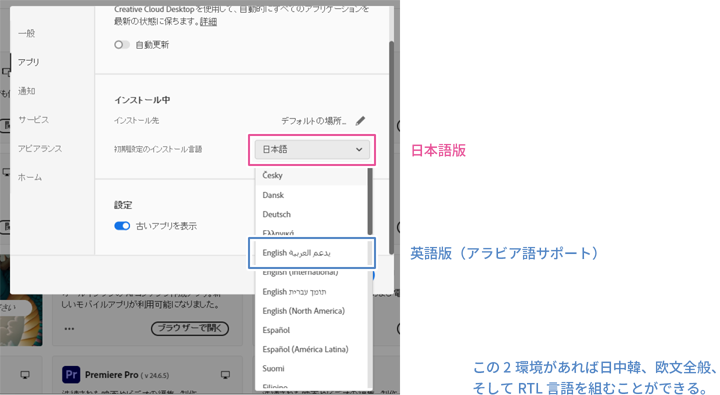
At the time of writing this article, the license allows activation on two PCs, but both cannot be used simultaneously.
Application-wide settings and individual file settings
When it comes to preferences, you would normally think of settings that control the behavior of the entire application. InDesign's preferences include both application-wide settings and individual file settings, but unfortunately, the settings screens are not separated and are all mixed together, making it hard to distinguish between them. Since this is confusing, the following will illustrate it with diagrams.
General / Interface / UI Scaling
There are no individual file settings.

Text|Type

Be sure to check "Use Typographer’s Quotes." If you uncheck it, dumb quotes will be used, which is one of the taboo choices in Western typesetting (an option that leads to immediate disqualification without question). Please refer to past articles for more information about quotation marks.
>> Multilingual Typesetting Notes: Quotation Marks
Advanced Text|Advanced Type
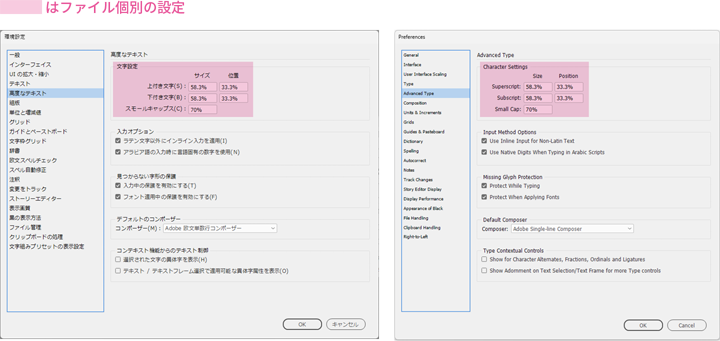
Typesetting|Composition
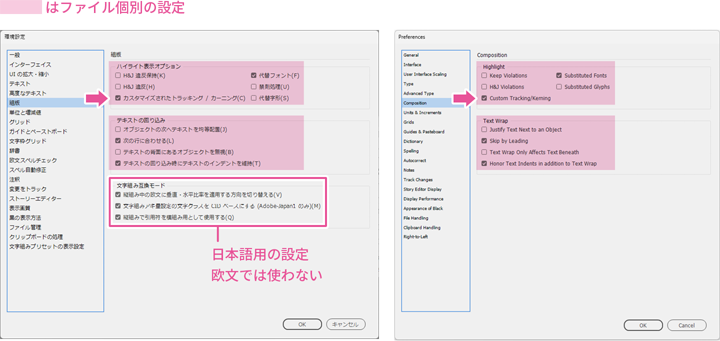
We recommend checking "Custom Tracking/Kerning." It helps to clean up Japanese adjustments such as "mojitsume" (character tightening) and "space before characters," creating clean English data.
Also, there are some settings and features available in the Japanese version that are not present in the English version. These will become unavailable (cannot be used) when translating and deploying from Japanese to English.
Units & Increments
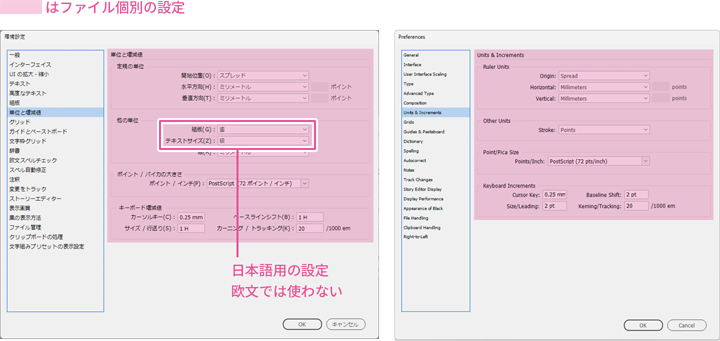
Grid|Grids

Guides & Pasteboard|Guides & Pasteboard
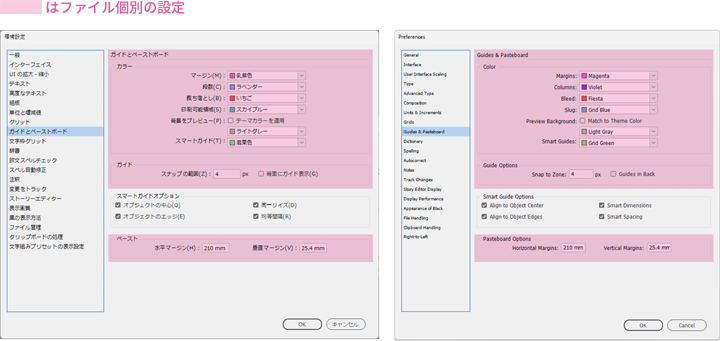
Character Frame Grid | (No Settings)
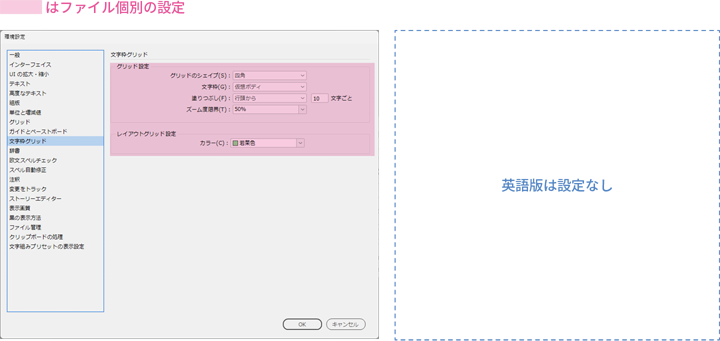
Dictionary|Dictionary
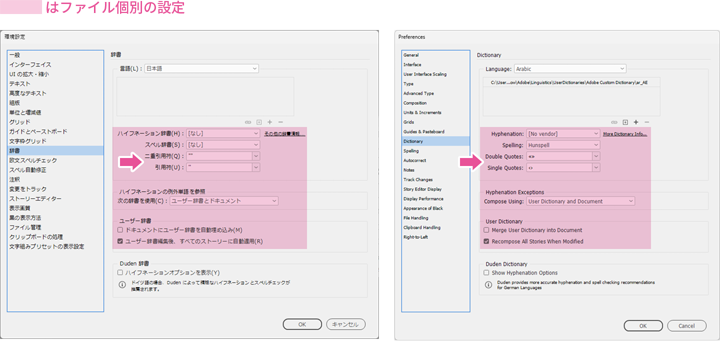
Quotation marks for each language are registered, and I believe the reliability is high for Western languages. You can trust InDesign without having to check each time. However, there are some languages other than Western ones that remain questionable.
English Spell Check / Autocorrect / Annotations | Spelling/Autocorrect/Notes
There are no individual file settings.
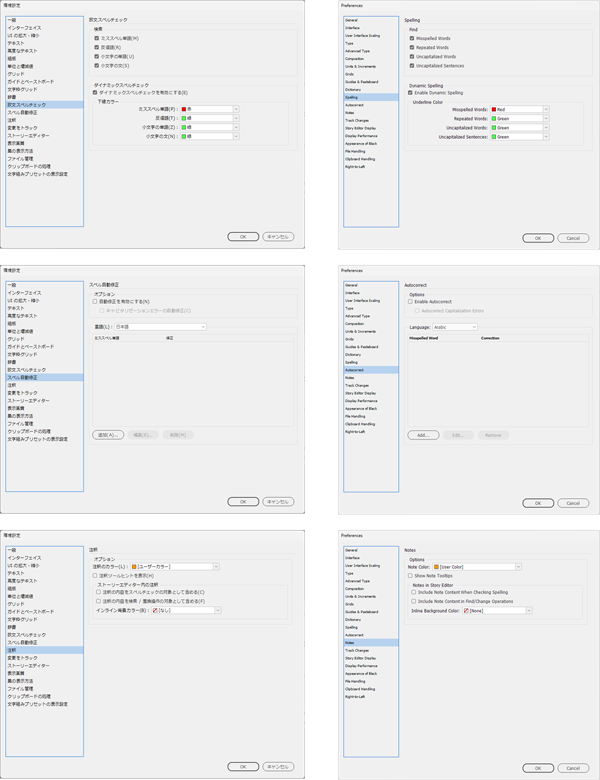
Track Changes / Story Editor / Display Quality|Track Changes / Story Editor Display / Display Performance
There are no individual file settings.
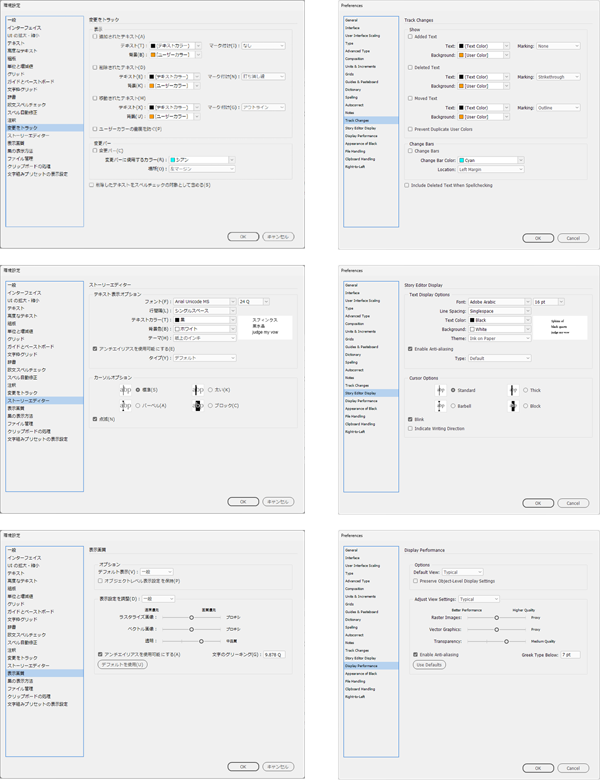
How to Display Black|Appearance of Black
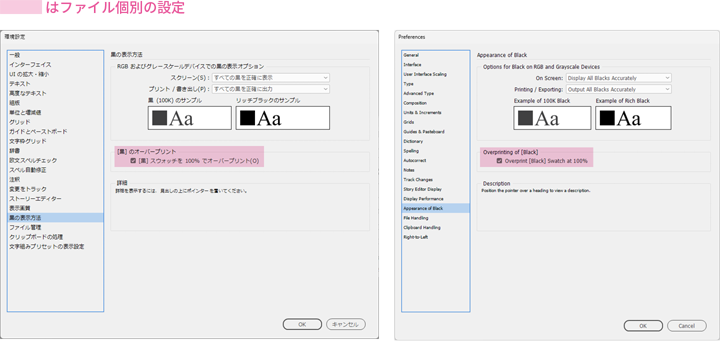
File Management|File Handling

Clipboard Handling|Clipboard Handling
There are no individual file settings.
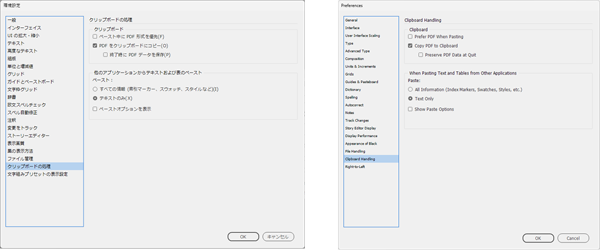
Display Settings for Typesetting Preset | (No Settings)
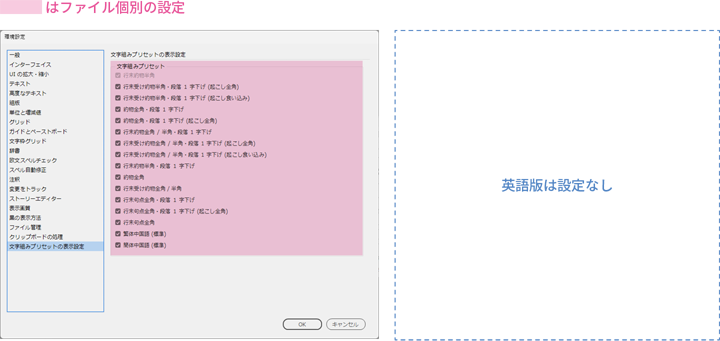
(No setting) | Right-to-Left
This setting is used only for languages that are read from right to left, such as Arabic, Persian, and Hebrew.
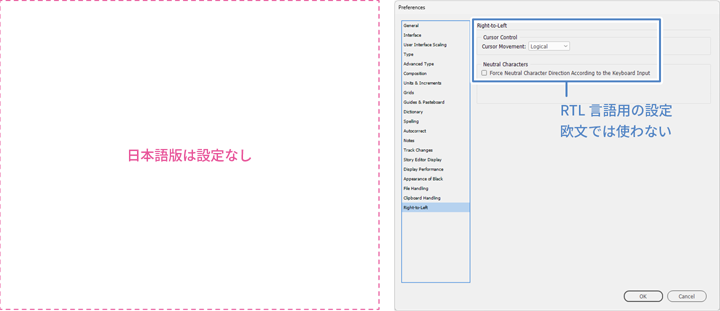
Main Reference Materials
Nigel French, InDesign Type: Professional Typography with Adobe InDesign (3rd edition), 2014
>>Related Materials: Post-Edit Quality Check Sheet Download

